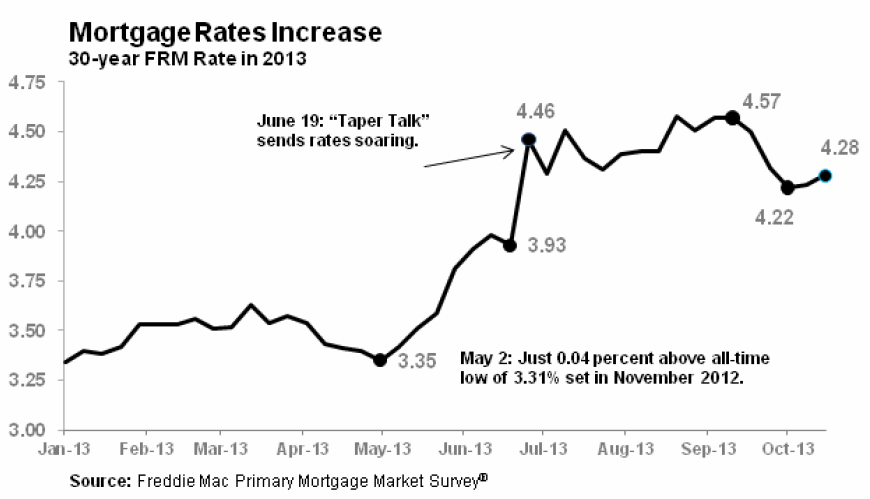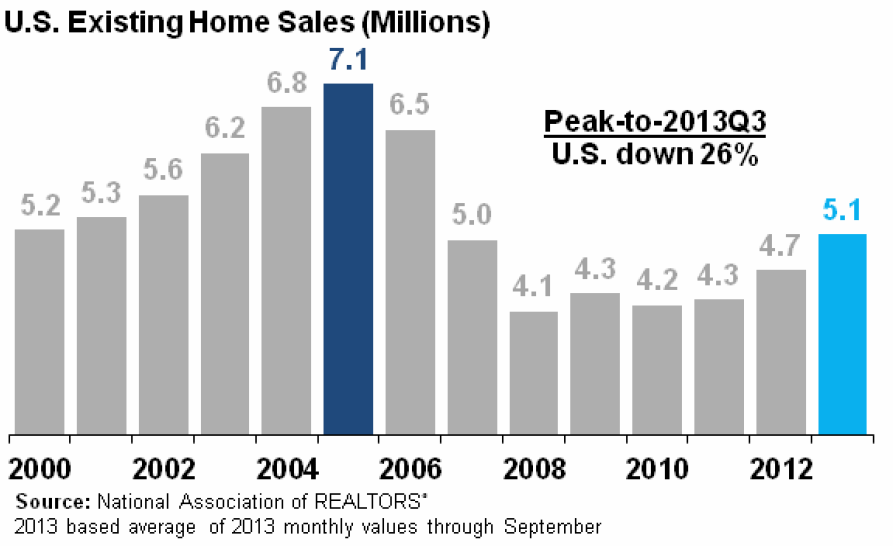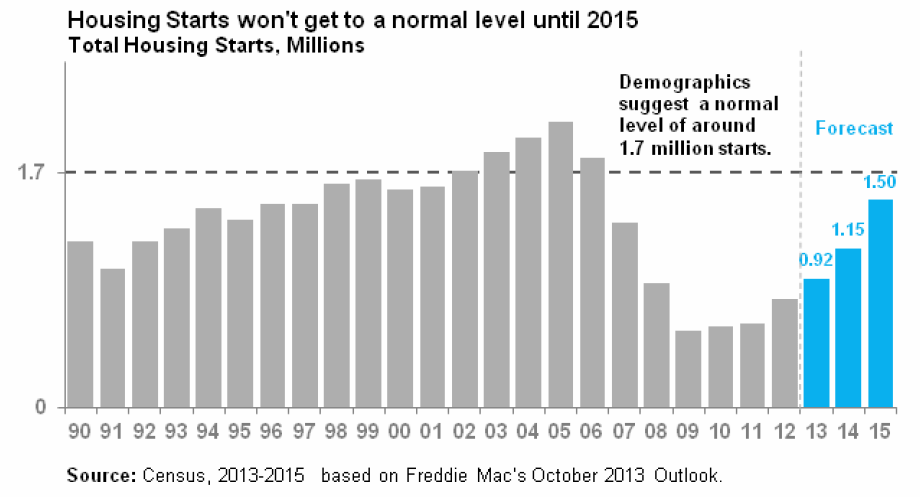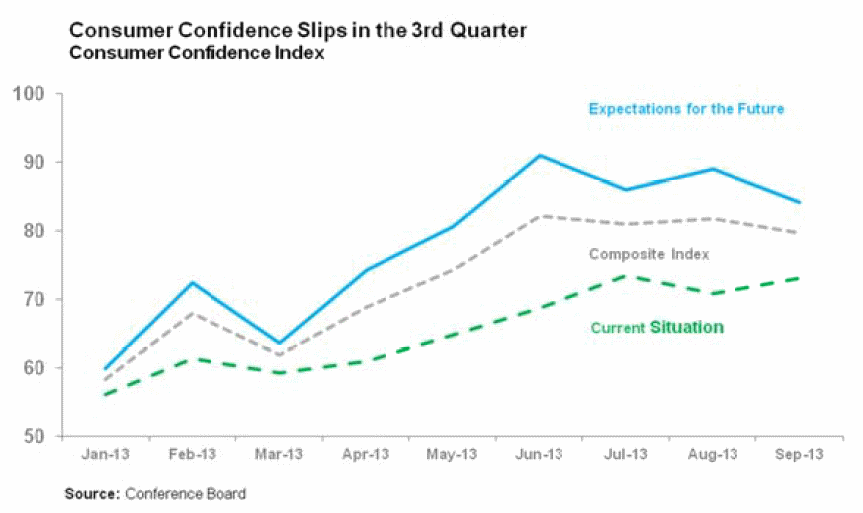In its October Outlook Freddie Mac says that the resurgent housing market supported economic growth in the second quarter but the recovery appears to have slipped a bit heading into the fourth. Rising rates are weighing on both the housing rebound and the economy as a whole and even with the shutdown over and the debt ceiling default averted at the last minute the two issues are not resolved and the economy faces ongoing uncertainty. Freddie Mac's Chief Economist Frank E. Nothaft and Deputy Chief Leonard Kiefer ask, "Will the economic recovery shutdown, or can we expect a pickup in economic activity any time soon?"
The last shutdown, almost 18 years ago, consisted of two only months apart. The first in November of 1995 lasted 5 days and furloughed 747,000 federal employees. The following January another lasted three weeks and affected 284,000 employees. The cost of those shutdowns was estimated at 0.25 percentage point in economic growth by the Bureau of Economic Analysis and 0.5 percentage point by the Congressional Budget Office. The shutdown this month was projected by Macroeconomic Advisers to reduce growth in the fourth quarter by 0.3 percentage point should it last for two weeks. It lasted 17 days.
The housing market was already beginning to cool for spring and summer's strong sales and rising prices. Mortgage rates rose steadily from June through September then retreated by 0.3 percentage points in September. Nothaft and Kiefer say they expect the rates to reverse course again once soon and project they will hover around 4.3 percent over the next few months and then head higher in 2014.

Even with rising rates homebuyer affordability will remain high. Prices are being driven up in many parts of the country by a lack of inventory in the face of higher demand with the supply of homes at a new post-recession low of 5 months at the end of September. According to the National Association of Realtors® this was 2 percent above the inventory in September 2012 but closed sales were up 11 percent, driving the inventory-sales ratio lower. In those markets with the most aggressive price increases the inventory-sales ratio is even tighter.
There are three causes of the supply; high numbers of underwater properties, a decline in distressed sales, and a depressed level of new home construction. CoreLogic estimates that 7.1 million homes or 14.5 percent of all mortgaged properties in the country were in negative equity status in the second quarter even as price gains lifted another 2.5 million homeowners into positive territory, a pace of improvement that should slow as price growth moderates. "The high level of underwater households removes an important source of supply of for-sale homes. Indeed, existing home sales as of the third quarter were still down 26 percent from their peak in the third quarter of 2005."

Homes with a seriously delinquent mortgage or in foreclosure have fallen in numbers by about 2.4 million from the peak of 5.1 million in 2010. As this foreclosure inventory continues to go down inventories should tighten further.
The third factor, new home construction, remains severely depressed. In a normal economy there should be around 1.7 to 1.8 million housing units added each year. Freddie Mac's most recent forecast anticipates that less than 1 million will be added in 2013 and about 1.15 million in 2014. "This dearth of building is due to weak (but improving) new home sales, and the inability to ramp up production significantly despite rising demand, the economists say. And the inability of home construction to rebound has kept the economy from reaching normal levels of economic growth. "Construction employment alone is 1 to 2 million below trend levels, which is roughly 1 year of non-farm payroll growth at current levels."

"As residential construction gets unstuck, the economy should start to get moving. We are forecasting that the ramping up of residential construction will take a while, and while economic growth will improve over the next year, we won't see an economy operating at full potential until sometime after 2015.
Also key to the housing market is the softening confidence in the economy from both consumers and business. Consumer confidence has remained low throughout the recovery until early this year but events in Washington are likely to weaken confidence further through the fourth quarter but should pick back up again next year.

Nothaft added, "The housing recovery keeps chugging along despite a constant barrage of disruptions to the broader economy. We're likely going to see the housing recovery slow down, but not shut down, as we close out the rest of this year due to tight inventories in many markets, rising mortgage rates and slumping consumer confidence. Fortunately, the housing recovery should continue to absorb the economic shocks in stride and improve next year."







